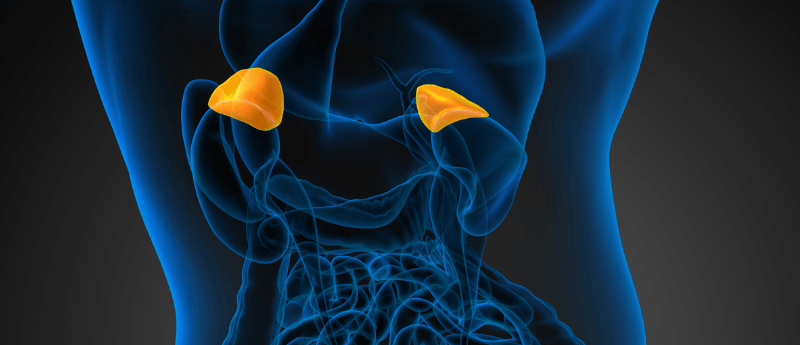Researchers produce adrenal gland organoids

In a recent study, researchers have induced stem cells in a petri dish to proliferate, develop, and take on some of the characteristics of a human embryonic adrenal gland. The approach used may one day work to reconstitute a functioning brain-adrenal gland feedback loop in people with adrenal gland disorders.
The adrenal gland, which sits atop the kidneys, is essential for maintaining a healthy body. In response to brain impulses, the adrenal gland secretes hormones that promote vital functions such as blood pressure, metabolic processes, and fertility.
Adrenal gland diseases, including primary adrenal insufficiency, where the gland fails to produce enough hormones, can cause fatigue, extremely low blood pressure, coma and even death if left untreated. There is currently no treatment for primary adrenal insufficiency and the lifelong hormone replacement medication used to treat it has serious negative effects.
A better alternative would be a regenerative medicine strategy that involves regrowing a functioning adrenal gland that can produce hormones and effectively release them in response to neural activity. Researchers at the University of Pennsylvania School of Veterinary Medicine (USA) induced stem cells in a petri dish to proliferate, develop, and take on some of the characteristics of a human embryonic adrenal gland in a recent study published in the journal Developmental Cell.
“This is a proof-of-principle that we can create a system grown in a dish that functions nearly identically to a human adrenal gland in the early stages of development,” explains Kotaro Sasaki, senior author of the paper. “A platform like this could be used to better understand the genetics of adrenal insufficiency and even for drug screening to identify better therapies for people with these disorders.”
Sasaki and his team’s objective was to utilize human induced pluripotent stem cells (iPSCs), which can specialize into a plethora of different cell types and can replicate the phases of normal human adrenal development.
The research team started by producing an organoid culture, a tissue culture method that is used to develop small, yet functional 3D organ models from a group of cells. A carefully selected growth medium was utilized to drive the iPSCs to induce an intermediate tissue type in the adrenal development process called the posterior intermediate mesoderm.
The researchers then began to drive those cells to the following stage, adrenocortical progenitor-like cells, in which cells switched on markers to indicate they had “committed” to become adrenal gland cells.
Molecular assays were used to test for these adrenal markers and the transmission electron microscope analyses were also employed to validate that the research team was on the correct path to constructing a tissue that was comparable to the early adrenal gland.
“The process we developed was highly efficient, with around 50% of cells in organoids acquiring adrenocortical cell fate,” says Michinori Mayama, a lead author of the study. “The ovoid cells with voluminous pink cytoplasm and relatively small nuclei that we saw in our cultures are very characteristic of human adrenal cells at that stage.”
Sasaki, Mayama, and the other members of the research team ran a series of experiments to measure how accurately the cells’ behavior resembled that of a normal human adrenal gland. They discovered that the lab-grown cells secreted steroid hormones comparable to the “real-life” equivalent. Mayama explains, “In vitro, we can produce much of the same steroids that are produced in vivo.”
The results also demonstrated that the cells could respond to the hypothalamic-pituitary-adrenal axis, a feedback loop that directs information back and forth between the brain and the adrenal gland.
“We used drugs that normally suppress adrenal DHEA production and showed that our iPSC-derived adrenal cells respond similarly to these drugs, with a marked reduction of hormone production,” explains Sasaki. “This means that you can use this system for screening drugs that target adrenal hormone production, which could benefit patients with excessive adrenal hormone production or with a prostate cancer that exploits adrenal hormones for their growth.”
“This is a first-of-its-kind study,” says Sasaki. “The field of cell therapy holds so much promise for treating not just adrenal insufficiencies but other hormone-driven diseases: hypertension, Cushing syndrome, polycystic ovary syndrome, and more.”